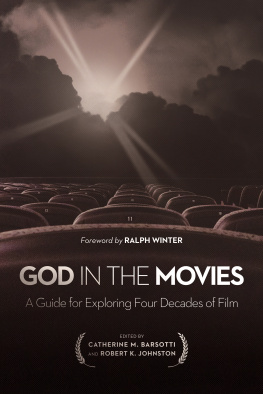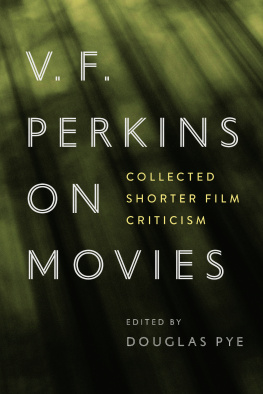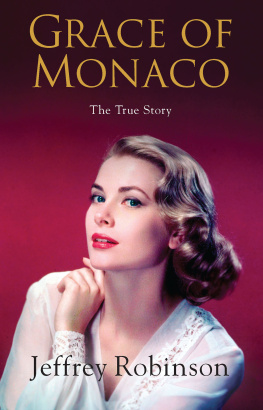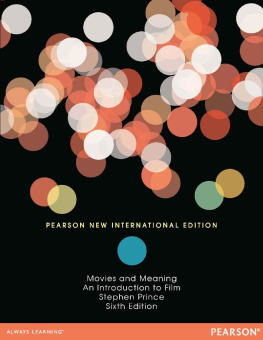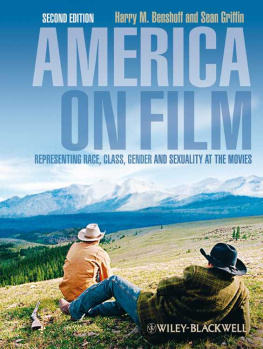James Monaco - How to Read a Film Fourth Edition: Movies, Media, and Beyond
Here you can read online James Monaco - How to Read a Film Fourth Edition: Movies, Media, and Beyond full text of the book (entire story) in english for free. Download pdf and epub, get meaning, cover and reviews about this ebook. year: 2011, publisher: Harbor Electronic Publishing, genre: Art. Description of the work, (preface) as well as reviews are available. Best literature library LitArk.com created for fans of good reading and offers a wide selection of genres:
Romance novel
Science fiction
Adventure
Detective
Science
History
Home and family
Prose
Art
Politics
Computer
Non-fiction
Religion
Business
Children
Humor
Choose a favorite category and find really read worthwhile books. Enjoy immersion in the world of imagination, feel the emotions of the characters or learn something new for yourself, make an fascinating discovery.

- Book:How to Read a Film Fourth Edition: Movies, Media, and Beyond
- Author:
- Publisher:Harbor Electronic Publishing
- Genre:
- Year:2011
- Rating:4 / 5
- Favourites:Add to favourites
- Your mark:
- 80
- 1
- 2
- 3
- 4
- 5
How to Read a Film Fourth Edition: Movies, Media, and Beyond: summary, description and annotation
We offer to read an annotation, description, summary or preface (depends on what the author of the book "How to Read a Film Fourth Edition: Movies, Media, and Beyond" wrote himself). If you haven't found the necessary information about the book — write in the comments, we will try to find it.
How to Read a Film Fourth Edition: Movies, Media, and Beyond — read online for free the complete book (whole text) full work
Below is the text of the book, divided by pages. System saving the place of the last page read, allows you to conveniently read the book "How to Read a Film Fourth Edition: Movies, Media, and Beyond" online for free, without having to search again every time where you left off. Put a bookmark, and you can go to the page where you finished reading at any time.
Font size:
Interval:
Bookmark:
OTHER BOOKS BY JAMES MONACO
The New Wave
Media Culture
Celebrity
Alain Resnais
American Film Now
Whos Who in American Film Now (ed.)
The Connoisseurs Guide to the Movies
The International Encyclopedia of Film (ed.)
The Film Guide (ed.)
The Dictionary of New Media
Movies, Media, and Beyond
Art, Technology, Language, History, Theory
Fourth Edition, Completely Revised and Expanded
James Monaco
with diagrams by David Lindroth

2009

Oxford University Press, Inc., publishes works that further Oxford Universitys objective of excellence in research, scholarship, and education.
Oxford New York
Auckland Cape Town Dar es Salaam Hong Kong Karachi
Kuala Lumpur Madrid Melbourne Mexico City Nairobi
New Delhi Shanghai Taipei Toronto
With offices in
Argentina Austria Brazil Chile Czech Republic France Greece
Guatemala Hungary Italy Japan Poland Portugal Singapore
South Korea Switzerland Thailand Turkey Ukraine Vietnam
Copyright 1977,1981, 2000, 2009 by James Monaco
First published in 1977 by Oxford University Press, Inc.
198 Madison Avenue, New York, NY 10016
www.oup.com
Oxford is a registered trademark of Oxford University Press.
All rights reserved. No part of this publication may be reproduced, stored in a retrieval system, or transmitted, in any form or by any means, electronic, mechanical, photocopying, recording, or otherwise, without the prior permission of Oxford University Press.
Cataloging-in-Publication data is available from the Library of Congress.
ISBN: 978-0-19-532105-0 (pbk.)
Since this page cannot legibly accommodate all necessary credits, the following page is regarded as an extension of the copyright page.
35798642
Printed in the United States of America
on acid-free paper.
ACKNOWLEDGMENTS
The passage from Denise Levertovs The Rights Denise Levertov, 1957, reprinted by permission of City Lights Books. The page from Donald Barthelmes Sadness Donald Barthelme, 1970, 1971, 1972, reprinted with the permission of Farrar, Straus & Giroux, Inc. Christian Metzs General Table of the Large Syntagmatic Category of the Image-Track from Film Language: A Semiotics of the Cinema by Christian Metz, translated by Michael Taylor, 1974 by Oxford University Press, Inc., reprinted by permission.
CREDITS
Joe Dunn: Photo Editor.
A NOTE ON THE TYPE
This edition of How to Read a Film is set in Adobes release of Aldus. Renowned typographer Hermann Zapf designed Aldus in 1954 for the Stempel foundry as a more readable companion to his famous Palatino. The name honors Aldus Manutius, the innovative fifteenth-century Italian printer and publisher. Zapf was one of the leading type designers of the twentieth century, and a pioneer in digital typography. The display type is Myriad Pro. The captions are set in Gill Sans.
READFILM.COM
For Susan
and our granddaughter
Katherine
Welcome!
The first edition of How to Read a Film appeared in 1977, a generation ago. The timing had been right for the book. We were just at the end of an exciting period in film history. In the sixties and seventies filmmakers had discovered their own history, a new generation of cineastes had emerged, and we were on the verge of a new technology that would change not only the way we make moviesbut our entire system of communication.
It has been fascinating to watch the development of this tectonic shift in society. The new technology is pervasive, and its effect on the way we make not only movies but all media is profound. The microcomputer revolution, which was beginning just as the first edition of How to Read a Film appeared, has thoroughly dominated the cultural and business history of our generation. The way we process text, images, and sounds today is radically different from what it was thirty years ago. And the union of media, which the invention of movies foreshadowed more than a hundred years ago, is now a reality. Its as if film, the defining medium of the twentieth century, was but prologue to the new media of the twenty-first. As the old technologies of chemistry and mechanics continue to yield to digital electronics and photonics, filmmakers are rediscovering the pioneer spirit. The medium is reinventing itself: now, if you can think it, you can film it.
The way we consume motion pictures has changed even more. In the 1970s, film buffs organized their lives around repertory-house schedules, and might travel fifty miles to catch a screening of a rare film. Today, tens of thousands of films are available on disc or on the web and you can be sure that, after Google finishes scanning all the worlds books, theyll turn their attention to digitizing all the worlds movies. Thirty years ago, very few of us actually owned movies; today, even fewer of us do not. Films are a lot more like books, now (and books are about to become more cinematic). In the past three decades our exposure to filmed entertainment has increased by several magnitudes. To my mind, this shift has been so great that it amounts to a qualitativenot just quantitativechange in the experience. More important, it has had a profound effect on the social contract. (Much of Chapters 6 and 7 deal with this new Mediasphere which now dominates our lives.)
Over the course of more than three decades and four editions was added to the third edition to discuss the digital world that had grown up since 1977. The first and second editions included a glossary which grew so much that it became its own book in 1999 (The Dictionary of New Media). Now that there are so many bibliographical tools available on the web, the extensive bibliography of the earlier editions has been replaced with a much shorter, more succinct list of suggested reading, which I hope you will find more useful.
But parts have changed very little. Chapters 1 (Film as an Art), 3 (The Language of Film), and 5 (Film Theory) have been updated but not radically restructured. The medium of film still bears the same relationship to the other arts as it did thirty years ago. Semiotics still seems to me the best way to understand how films mean what they mean (and examples drawn from the old masters seem the best illustrations). The basics of film theory were well described in the last century andalthough contemporary academics may disagreeI dont think in the last decades weve gone very far beyond the works discussed in .
Chapter 2 (Technology) presented a dilemma. The Maltese Cross, the variable shuttereven the reflex cameramust seem like quaint antiques to the digital generation. They are still here in the fourth edition because they illustrate important principles. One of the dangers of digital media is its abstraction: an appreciation for how mechanical/chemical cinema worked is, I think, critical to understanding the medium.
Youll find major changes in Chapters 4, 6, and 7. More than thirty percent of the text is new; there are 125 new illustrations and diagrams. But please understand that, despite the changes, Chapters 4 (Film History) and 6 (Media) remain just sketches of history: Scores of important and interesting films and television programs didnt make the cut.
I wrote the first edition of
Font size:
Interval:
Bookmark:
Similar books «How to Read a Film Fourth Edition: Movies, Media, and Beyond»
Look at similar books to How to Read a Film Fourth Edition: Movies, Media, and Beyond. We have selected literature similar in name and meaning in the hope of providing readers with more options to find new, interesting, not yet read works.
Discussion, reviews of the book How to Read a Film Fourth Edition: Movies, Media, and Beyond and just readers' own opinions. Leave your comments, write what you think about the work, its meaning or the main characters. Specify what exactly you liked and what you didn't like, and why you think so.


